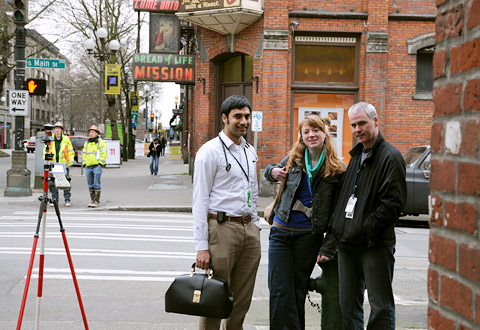Solving Our Region's Homelessness Problem [May 2017 Breakfast Recap]
 This was a tough one! We have participated in and to a large extent driven the tremendous real estate expansion in Seattle and that’s a good thing! However, there can be unintended consequences and in our May Breakfast we explored one of those consequences: Homelessness. The Breakfast was sponsored by Lake Union Partners, Runberg Architecture Group, and Rushing. We sincerely thank them for their continued support.
This was a tough one! We have participated in and to a large extent driven the tremendous real estate expansion in Seattle and that’s a good thing! However, there can be unintended consequences and in our May Breakfast we explored one of those consequences: Homelessness. The Breakfast was sponsored by Lake Union Partners, Runberg Architecture Group, and Rushing. We sincerely thank them for their continued support.
President Kristin Jensen related information about the annual NAIOP Washington State PAC fundraiser on June 28. She also welcomed our new members. We heard about the Summer Social on August 14 at The Golf Club at Newcastle and received a presentation on the 2017 Real Estate Challenge, which was held in British Columbia.
Richard Kendall, General Manager, Allison+Partners moderated our panel which included:
- Susan Boyd, CEO of Bellwether Housing
- Daniel Malone, Executive Director of Downtown Emergency Service Center (DESC)
- Dr. Simha Reddy, Physician at VA Medical Center and Board Member of King County Coalition on Homelessness
The scope of the problem is not insignificant. Since 2013, there has been an increase of 1,400 individuals experiencing homelessness in Washington State, which has brought the total number to 21,000. The increase is the second largest rise in the US.
Dr. Reddy gave some statistics for context.
- 80% of the homeless in Washington State became homeless while living in Washington. We have heard anecdotal information that implies Washington State is “inviting” homeless people to our state and the doctor’s statistic seems to belie that.
- 50% of the homeless in Washington State do not have drug and/or alcohol problems. Rather the major causes of homelessness relate to:
- Divorce
- Physical injury
- Job loss
Susan spoke of the fact that some sort of crisis drives people to homelessness. And that affordable housing creates a potential for solutions.
Daniel talked about how the majority of homeless people are not permanently homeless. Eighty percent experience homelessness for a few weeks or months, while the remaining 20% are experiencing long term homelessness and suffer from serious mental illness and addiction. Daniel pointed to the rapid increase in rental rates in Seattle / King County as a major contributing factor to the problem of homelessness.
Richard highlighted the fact that approximately 5,500 of the homeless population are students and that the increase in homelessness in that category is increasing by 20% yearly.
Susan related that in her experience the following are causes of homelessness:
- Family instability
- Employment
- Drugs and/or alcohol
- Rent increases
Dr. Reddy also said the every $100 increase in the average rent adds 15% to the homeless population.
Daniel also related that the level of care for mental illness and addiction are falling short of what is needed to make a dent in the problem.
The panel looked at a number of positive developments as well highlighting the recent influx of money and resources by Paul Allen and the Amazon relationship with Mary’s Place. We also were told about some positive outcomes in Salt Lake City and Houston. It’s important to note that in both of those cities, providing housing became the first priority and it was easier because the average rental rates are not as high as in Seattle.
Homelessness is a problem that we are likely to see increase. We as a development community have been blessed many times over in this marketplace. NAIOP has always been a leader in giving back to the community. This is a problem that will strain our abilities to do so but imagine the benefits—the real, tangible benefits that help people who are in trouble—if we are able to help solve this problem.
This article was written by NAIOP Washington State and Programs Committee member Edward Scherer, Account Executive, Avidex Industries, LLC.
